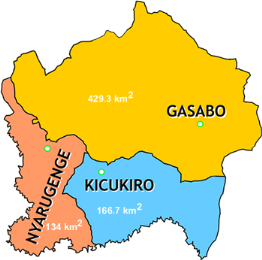CHAPTER THREE: RESEARCH
METHODOLOGY
3.0
Introduction
This chapter presents methodology describing how the study was
conducted. It includes; research design, Study population, sample and sample
size, methods of data collection, methods of data analysis and anticipation of
the study.
Research methodology refers to a philosophy of research
process. It includes the assumptions and values that serve a rationale for
research and the standards or criteria the researcher uses for collecting and
interpreting data and reaching at conclusions (Martin and Amin, 2005:63). In
other words research methodology determines the factors such as how to write
hypothesis and what level of evidence is necessary to make decisions on whether
to accept or reject the hypothesis.
3.1. Study area
This study was carried out in a private business company
dealing with house and road construction and electrical ware repair. It is
located in Kigali City in Rwanda, precisely in Nyarugenge District. It employs
101 staff.
THE MAP OF THE CITY OF KIGALI

Etablissement Kazoza Justin et Compagnie
3.2. Research design
A research design represents a plan of how particular study
should be conducted. It is concerned with the type of data that will be
collected and the means used to obtain them (Nieswiadomy; 1993). (Oswala E.C,
2001:52) refer to research design as the overall plan to use and follow in
answering the research questions. Thus it involves deciding on what type of
research questions to use and the answers to them while considering the best
way to gather data required for the study. This is a case study research. This
refers to a method based on an in-depth investigation of a single individual,
group, or phenomenon (Robert K. Yin: 2009). The researcher also used
triangulation of both quantitative and qualitative research methods for
collecting and analyzing data to describe and interpret it into information.
3.3. Study population
A research study population is also known as a well-defined
collection of individuals or objects known to have similar characteristics.
(Oswala E.C, 2001:55) refer to population as the number of persons or objects
covered by the study or with which the study is concerned. In other words, it
is a set of people or items under consideration in a study. In this research,
all employees of the EKJ&CIE form the research population through which the
sample was drawn from. The total population number was 105 employees among
which four of them were top managers.
3.4. Sample and Sample size
A sample is a small group of cases drawn from and used to
represent the large group or whole population under investigation. Therefore
sample size is the number of people or objects in the selected sample (Manheim
JB and Rich, 1999:448).
Sampling is the process of selecting elements from the total
population in such a way that the sample elements selected represent the total
population. Thus in research the sample should be a representation of the total
population such that as much as possible, most characteristics of the
population should be represented in the sample selected (Martin, E. Amin
2005:67). The researcher used two different samples according to the required
data related to the objectives of the study. On one hand, the researcher
purposively chose two of the top managers for interview in order to collect
information related to the risk management plans used, challenges they face and
the current trend of risk management. Any manager who would be available
especially the risk operation manager was considered. On the other hand, the
researcher made another sample drawn from the rest of employees from which he
intended to get information related to the employees' awareness on risk
management. This information was obtained from a distributed questionnaire to
that sample which was obtained from this formula below:
n=N/1+N(e)2
whereby:
n= sample size; N= population; e= the level of precision.
The confidence interval or margin of error is 10% or .1 where
as the confidence level is 90%
N= 101 e= 10% or 0.1 n= 101/1+ 101(0.1)2= 50.2
cases/respondents
To get that sample, the researcher had a list of all employees
arranged in alphabetical order excluding 4 top managers. A systematic sampling
method was used whereby a starting number was randomly chosen then an interval
was determined by N/n=K. It is 101/50=2
the starting number was randomly
chosen between 1 and 2, then each K+1 was picked up until all 50 names were
found.
| 

